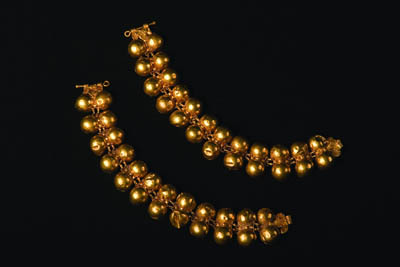MELBOURNE WINTER MASTERPIECES
A DAY IN POMPEII
Melbourne Museum 26 June – 25 October 2009
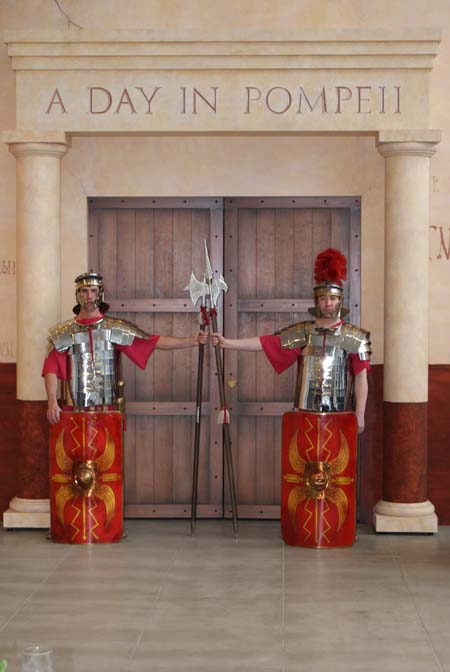
MELBOURNE Australia. – June 21, 2009 – The Hon. Lynne Kosky, Minister for Arts and the Melbourne Museum open the latest exhibition of the Melbourne Winter Masterpieces, A Day In Pompeii. The media and guests of the Museum were treated to a media preview of not only the artifacts of Pompeii itself but also the story of this doomed city.
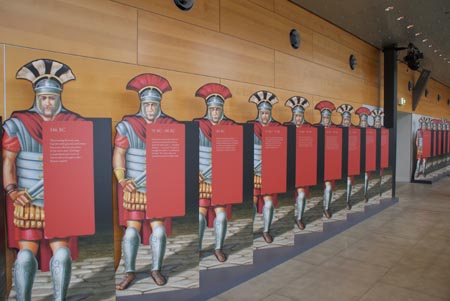
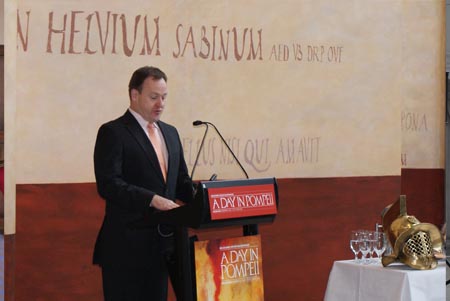
The exhibition was officially opened by Brett Dunlop (Manager, Melbourne Museum, The Hon. Lynne Kosky and Dr. Patrick Greene (CEO, Museum Victoria) who gave the media a brief history of the significance and importance of this exhibition, historically and also to the city of Melbourne.
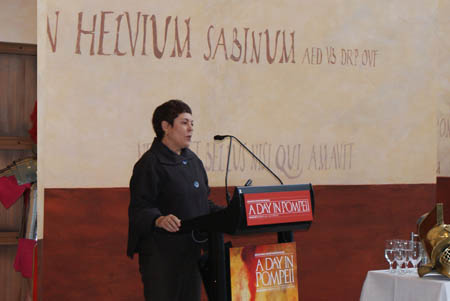
The Hon. Lynne Kosky mentioned Pliny the Younger in her speech, one of the witnesses of the eruption of Mount Vesuvius who wrote letters to historian Tacitus about this event. In relation to Melbourne, this will be the only city in Australia that will hold this exhibition and it will ultimately bring thousands of visitors, from Australia and aboard to the Melbourne Museum to witness this spectacular display.
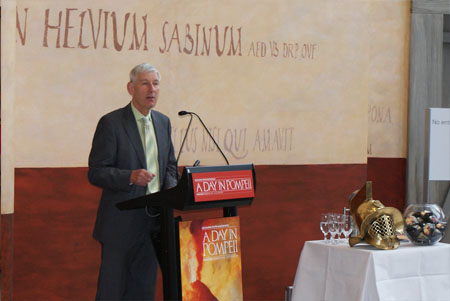
With over 250 objects on display that include gold jewellery, gladiator armour and other archeological artifacts, the exhibition goes beyond just the artifacts by helping the visitor understand what life in Pompeii was like through interactive multimedia presentations and even a 3D movie showcasing the last days of Pompeii. The exhibition hall has even been designed to look like certain parts of Pompeii to truly immerse you into this ancient city.
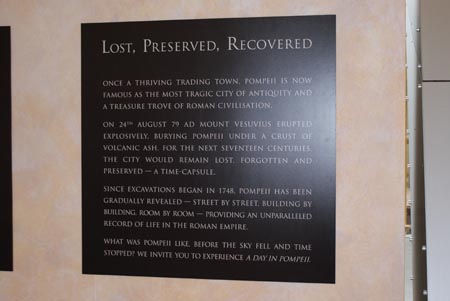
The speakers also thanked Dr Antonio Varone, Soprintendenza Speciale per I Beni Archeologici di Napoli e Pompei who assisted the Melbourne Museum organise this epic exhibition. Three years in the making, this exhibition will take viewers on a journey back in time as they experience this remarkable culture that was in essence frozen in time.
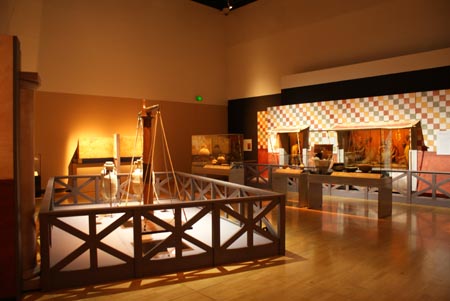
The story of Pompeii began on the 24th of August 79 A.D., which would have this city forever captured in time. During the middle of this day, around 1pm to be precise, Mount Vesuvius began its deadly eruption and although many fled the city, thousands also lost their life when the deadly pumice and thick volcanic ash overwhelmed this city.
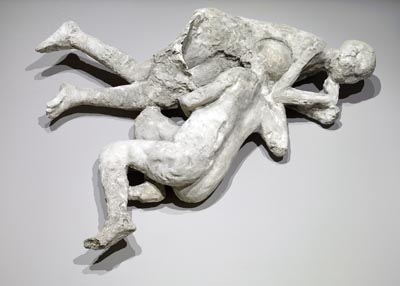
In the letters of Gauis Plinius Caecilius Secundus, he wrote … a cloud of unusual size and appearance… being like an umbrella pine, for it rose to a great height on a sort of trunk and then split into branches … We also saw the sea sucked away… so that quantities of sea creatures were left stranded on dry land. This man would ultimately become the link from the ancient world to the modern through his eye witness account.
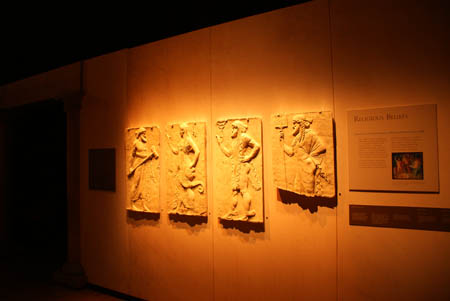
Interesting enough, Pompeii is probably the only archeological discovery that has a real emotional tie to the visitor due to the almost statue-like remains of the inhabitants. A handful of these body casts are on display which were made from the original “body” tombs of this human tragedy.
Those who stayed behind in Pompeii would have died a horrendous death as they inhaled the hot gas and ash. You can even see the suffering on their faces and their bodies. After the pumice and ash, the rain would have turned this ash into mud, hence creating human statues that are now on display at the Melbourne Museum. It’s almost as if Medusa herself looked at these people with her deadly serpents.

Victims clutched each other and shielded each other from the ash that rained from the heavens. It’s truly a moving experience seeing these body casts and a memory that will be with you forever. Even after thousands of years, the link between the visitor and those who perished are very strong.
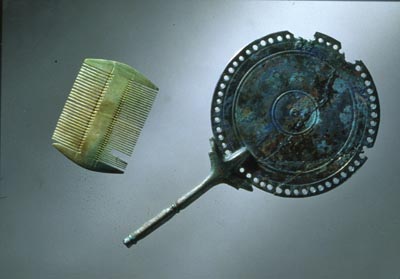
The exhibition also shows a pig and a dog who would have died in excruciating circumstances from their body shapes. Ironically, after two years, the Romans could not find the city once it was buried and it was not until the 1700’s that it was discovered again.
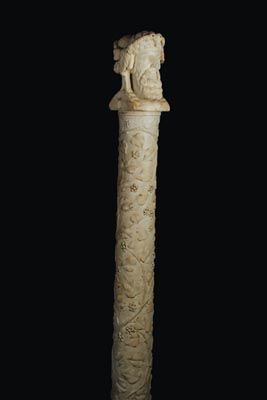
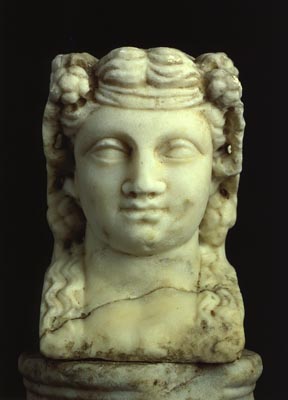
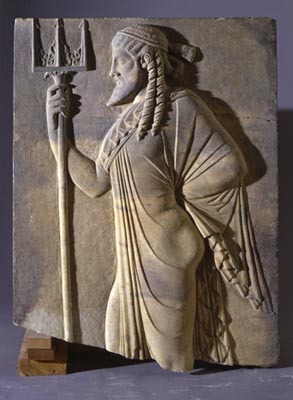
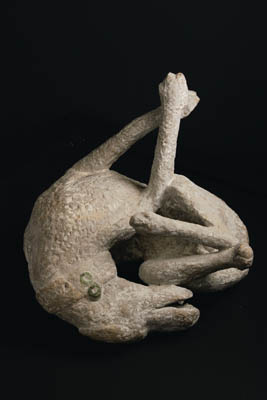
The exhibition also explains to the visitor about volcanoes and interestingly enough, the volcano responsible for the destruction of Pompeii has not erupted since 1944. Highlights of the exhibition include Gladiator armour, gold jewellery, including a bracelet given to a slave girl from her master, a marble bust of an unknown woman, cast of a guard dog, still wearing his bronze collar, two young women clutched together and an amazing assortment of coins from this era.
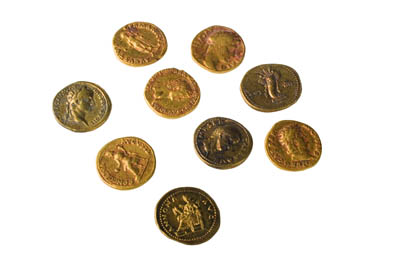
Before this event, Pompeii was an affluent city which was the home to many wealthy families. Rome was a remarkable civilization which used toilets, had water systems, make-up for women, illegal gambling and a rigid government under the auspice of the “Gods”. It was the apex of civilization at this time.
Breathtaking and remarkable describes this exhibition perfectly
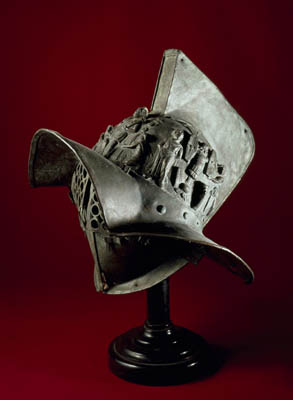
A Day in Pompeii is presented in association with the Soprintendenza Speciale per I Beni Archeologici di Napoli e Pompei (SANP) and costs $20 for adults, $14 for concession holders, $12 for children and $54 for a family.
